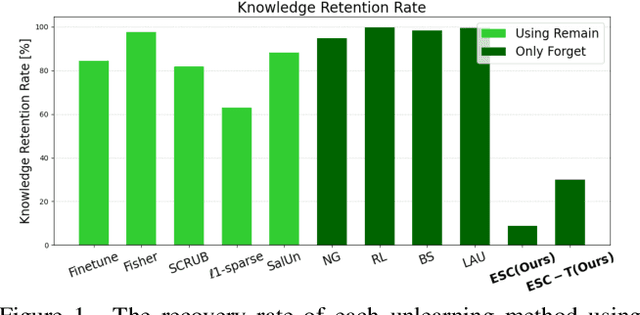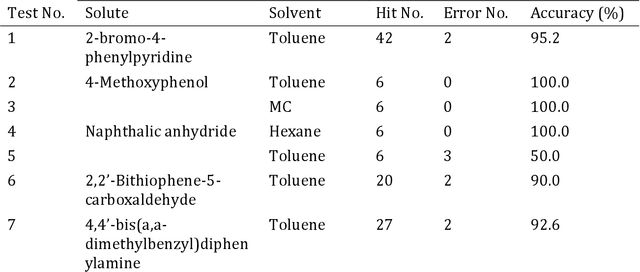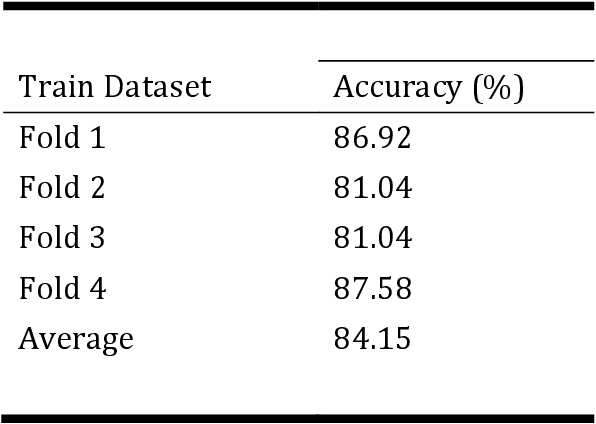Minwoo Jeon
ESC: Erasing Space Concept for Knowledge Deletion
Apr 03, 2025



Abstract:As concerns regarding privacy in deep learning continue to grow, individuals are increasingly apprehensive about the potential exploitation of their personal knowledge in trained models. Despite several research efforts to address this, they often fail to consider the real-world demand from users for complete knowledge erasure. Furthermore, our investigation reveals that existing methods have a risk of leaking personal knowledge through embedding features. To address these issues, we introduce a novel concept of Knowledge Deletion (KD), an advanced task that considers both concerns, and provides an appropriate metric, named Knowledge Retention score (KR), for assessing knowledge retention in feature space. To achieve this, we propose a novel training-free erasing approach named Erasing Space Concept (ESC), which restricts the important subspace for the forgetting knowledge by eliminating the relevant activations in the feature. In addition, we suggest ESC with Training (ESC-T), which uses a learnable mask to better balance the trade-off between forgetting and preserving knowledge in KD. Our extensive experiments on various datasets and models demonstrate that our proposed methods achieve the fastest and state-of-the-art performance. Notably, our methods are applicable to diverse forgetting scenarios, such as facial domain setting, demonstrating the generalizability of our methods. The code is available at http://github.com/KU-VGI/ESC .
Automated Solubility Analysis System and Method Using Computer Vision and Machine Learning
Apr 07, 2023


Abstract:In this study, a novel active solubility sensing device using computer vision is proposed to improve separation purification performance and prevent malfunctions of separation equipment such as preparative liquid chromatographers and evaporators. The proposed device actively measures the solubility by transmitting a solution using a background image. The proposed system is a combination of a device that uses a background image and a method for estimating the dissolution and particle presence by changing the background image. The proposed device consists of four parts: camera, display, adjustment, and server units. The camera unit is made up of a rear image sensor on a mobile phone. The display unit is comprised of a tablet screen. The adjustment unit is composed of rotating and height-adjustment jigs. Finally, the server unit consists of a socket server for communication between the units and a PC, including an automated solubility analysis system implemented in Python. The dissolution status of the solution was divided into four categories and a case study was conducted. The algorithms were trained based on these results. Six organic materials and four organic solvents were combined with 202 tests to train the developed algorithm. As a result, the evaluation rate for the dissolution state exhibited an accuracy of 95 %. In addition, the device and method must develop a feedback function that can add a solvent or solute after dissolution detection using solubility results for use in autonomous systems, such as a synthetic automation system. Finally, the diversification of the sensing method is expected to extend not only to the solution but also to the solubility and homogeneity analysis of the film.
Decision-BADGE: Decision-based Adversarial Batch Attack with Directional Gradient Estimation
Mar 09, 2023Abstract:The vulnerability of deep neural networks to adversarial examples has led to the rise in the use of adversarial attacks. While various decision-based and universal attack methods have been proposed, none have attempted to create a decision-based universal adversarial attack. This research proposes Decision-BADGE, which uses random gradient-free optimization and batch attack to generate universal adversarial perturbations for decision-based attacks. Multiple adversarial examples are combined to optimize a single universal perturbation, and the accuracy metric is reformulated into a continuous Hamming distance form. The effectiveness of accuracy metric as a loss function is demonstrated and mathematically proven. The combination of Decision-BADGE and the accuracy loss function performs better than both score-based image-dependent attack and white-box universal attack methods in terms of attack time efficiency. The research also shows that Decision-BADGE can successfully deceive unseen victims and accurately target specific classes.
 Add to Chrome
Add to Chrome Add to Firefox
Add to Firefox Add to Edge
Add to Edge